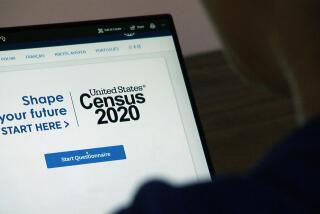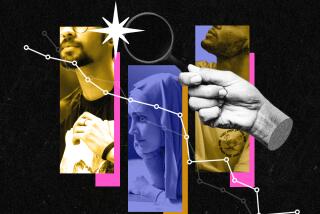The dark side of white
From 1790 to 1952, only “white people” were eligible to become naturalized U.S. citizens. That fact alone explains why for most of our history, immigrants and their descendants fought to be considered white.
It wasn’t a pretty process. Nor did the coveted category of “whiteness” have any clear definition. Oh, sure, some dimwitted people really thought it was a rigidly scientific category. But for the most part, the evolving definitions and elastic boundaries of whiteness were subject to cultural bias and, let’s face it, whim and subjectivity.
The federal government (and the Census Bureau) likes to pretend it knows what white is, but not everyone agrees with its definitions. Now some Arab Americans are openly questioning its categories -- and the meaning and cost of whiteness.
Since the first census in 1790, the government has separated people into racial categories. It did so because the constitutional mandate for a decennial enumeration was based on free people -- that is, whites -- counting more than Indians and black slaves. The census reflected and upheld the racial hierarchy that existed in society.
Many books and articles have been devoted to explaining what it means to be white in America, but my favorite way to get at it is to describe an interview I helped conduct three years ago with a retired sheriff in Sunflower County in the Mississippi Delta, where, like most places in the U.S., the “white” population is actually a fragile amalgam of diverse subgroups.
“Are Lebanese white people?” we asked the 71-year-old gentleman who considered himself white. “Yes,” he said, “although they’re real dark.” How about Italian Catholics; are they white? Sure. And Jews? Yes. What about the Chinese? “Yes,” he said, “they go to the white schools.” And Mexicans? “They’re becoming more white,” he said. “More of them are getting an education.”
Then what is a white person? we asked. After some confusion, our interviewee gave us this answer: anybody “who isn’t black.”
Over the decades, new immigrants to these shores were obliged to fit themselves into this black/white racial scheme. Not surprisingly, most chose to identify themselves with the group that had full rights. In books such as “How the Irish Became White,” scholars have traced the path that immigrant subgroups took to become considered part of the “white” race. It’s a poignant and peculiarly American journey. The protection and status of whiteness was not without costs. Most distinct subgroups gradually lost their distinctiveness. Their members traded specific ethnic labels -- Italian, Swedish, French -- for the generic racial label of “white.” They exchanged identities that told us something about their unique histories for an elastic racial category that mostly tells us what they are not.
The long process of race trumping ethnicity continues in a few months when the 2010 census is conducted. For the first time since 1980, the decennial census will not ask a question about ancestry and ethnic ties for those who identify themselves racially as white or black. If you designate yourself as Asian or Latino, however, you will be able to identify yourself by ethnic subgroup or national origin -- Chinese, Japanese, Mexican American, Cuban.
The Census Bureau says that the question was jettisoned for the purposes of streamlining. And to be fair, the census’ ancestry data for whites was never terribly reliable beyond the immigrant generation. (For example, the number of Louisianians who called themselves Cajun unrealistically plunged from 432,549 in 1990 to 44,960 in 2000.) But the cultural significance of the move is nonetheless profound. It means we as a nation care less about the many ethnic groups that helped build this country than the divisive racial categories that have generally served to divide it.
Not surprisingly, some people are protesting. Arab American activists in particular have expressed their displeasure. They long ago laid claim to official whiteness (immigrants from Syria and “Arabia” brought a series of court cases, seeking to naturalize). But they know that ethnicity still matters. Imad Hamad, the director of the American-Arab Anti-Discrimination Committee for the Detroit region, told the Detroit Free Press the move by the census was unfair “because we are not treated as white in society and by the government, but we also don’t qualify as minorities to get the benefits of some programs.”
Claiming whiteness has always been a Faustian bargain. Ditching the ancestry question on the decennial census makes the nature of the exchange all the more clear. In our culturally, geographically, economically mobile society, the embrace of ethnicity -- real or imagined -- has long served as a source of protection and rootedness. As the concept of ethnicity vanishes into whiteness, society’s alienation abounds.
grodriguez@latimescolumnists.com
More to Read
Sign up for Essential California
The most important California stories and recommendations in your inbox every morning.
You may occasionally receive promotional content from the Los Angeles Times.










